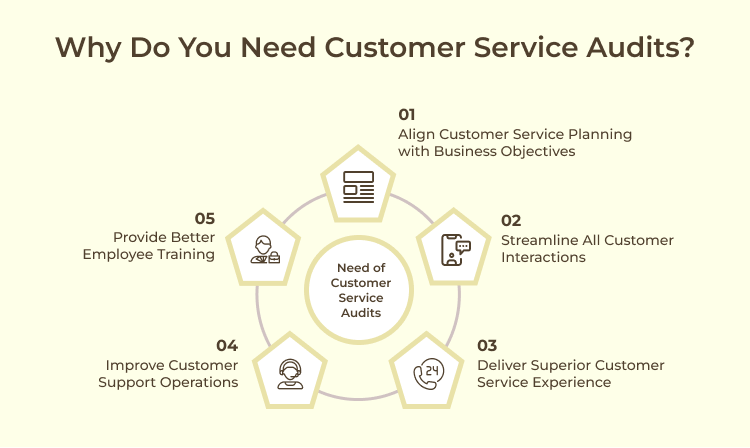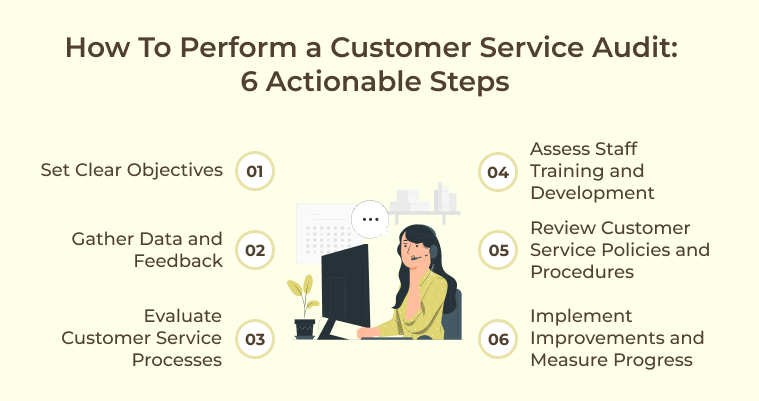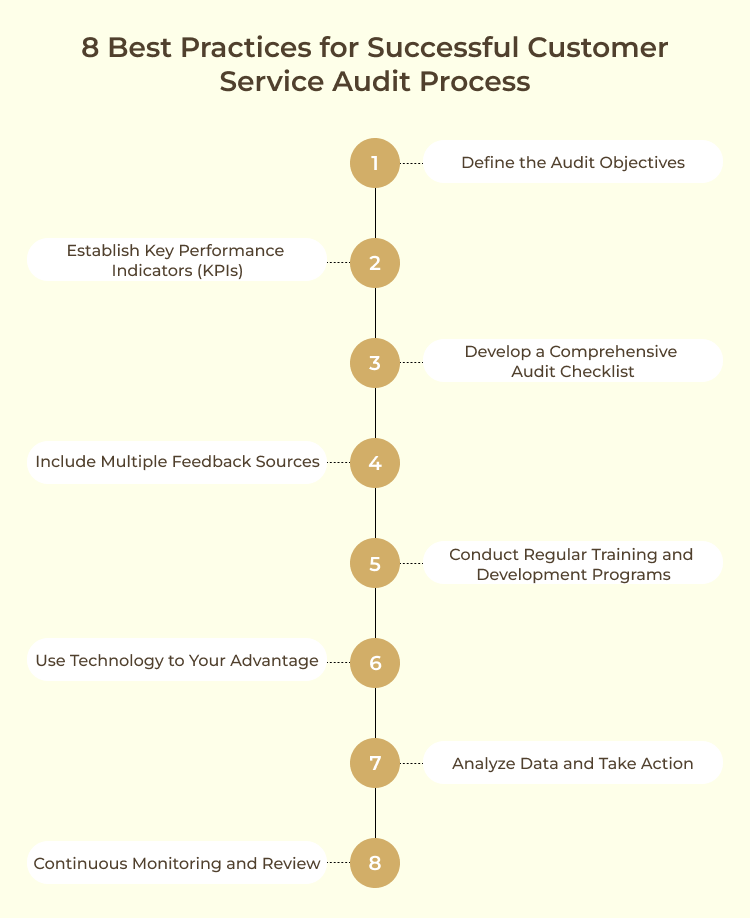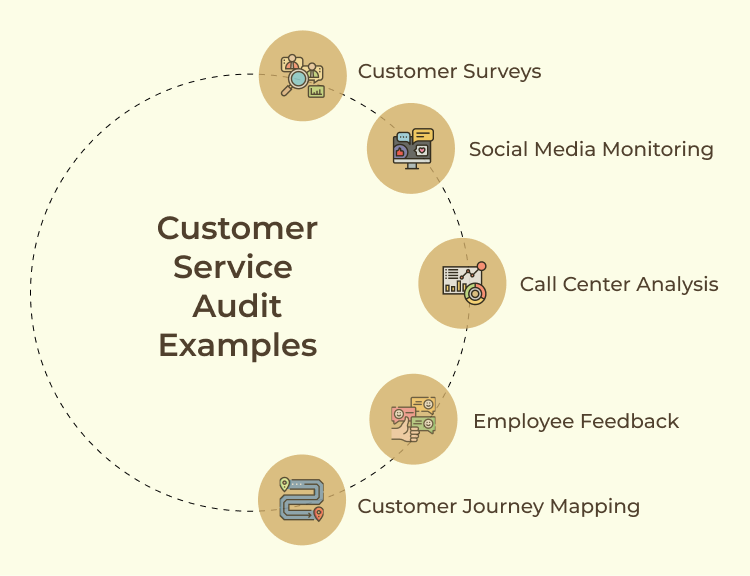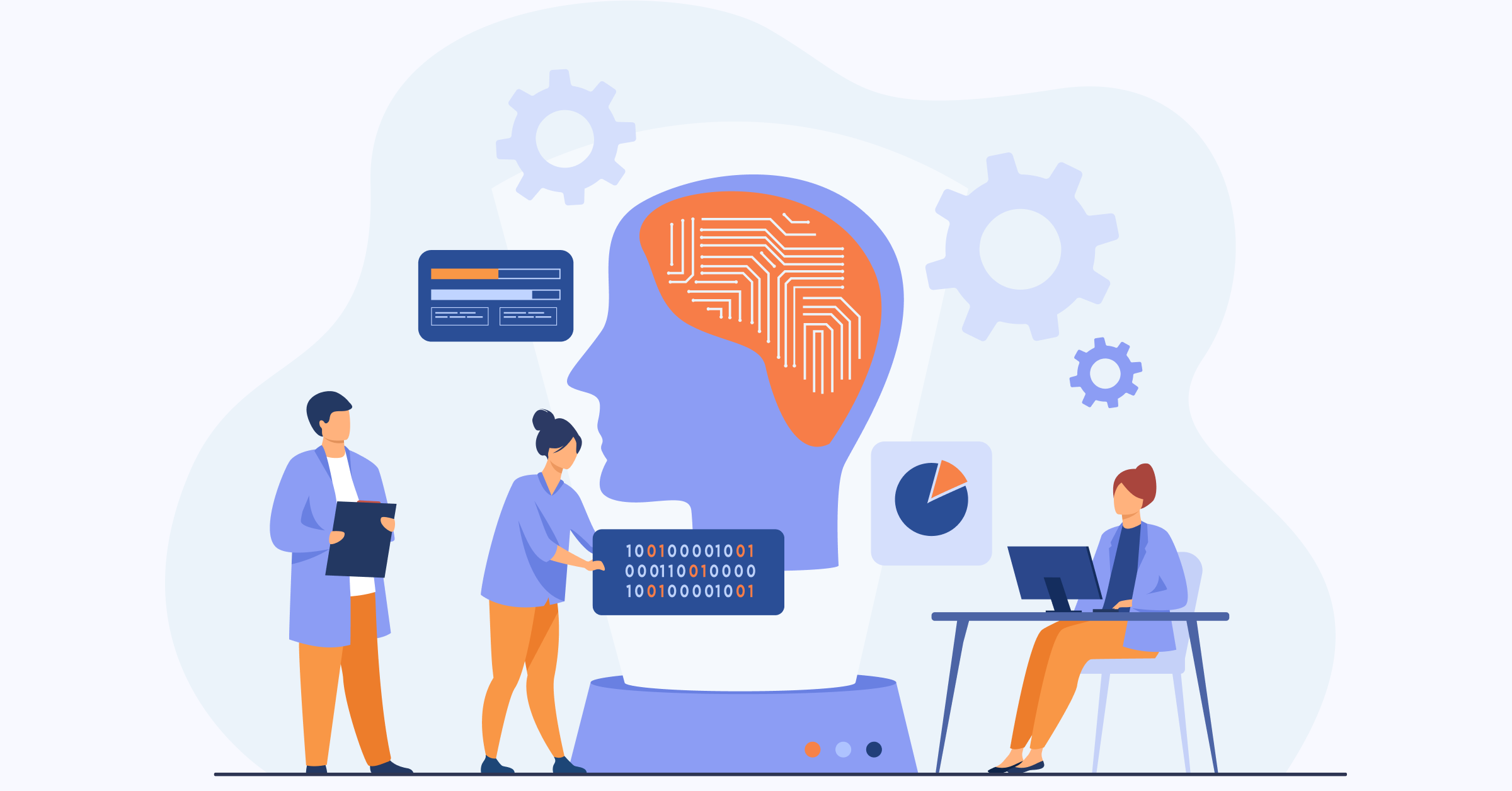Here are the best practices for a successful customer service audit process.
1. Define the Audit Objectives
Businesses that conduct a customer service audit should get started by outlining the key audit objectives. It is essential to define the goals and objectives of the process.
Are you looking to identify gaps in service delivery, evaluate customer satisfaction, or analyze response times?
Clearly outlining the audit objectives will ensure that the assessment focuses on the relevant aspects of customer service.
2. Establish Key Performance Indicators (KPIs)
Identify and establish KPIs that will serve as a benchmark for evaluating customer service performance. These may include
- Average Response Time (ART)
- First Contact Resolution Rate (FCR rate)
- Customer Satisfaction Scores (CSAT)
Based on your business, you can identify other metrics that align with your business goals. Setting clear KPIs will help measure progress and track improvements over time.
3. Develop a Comprehensive Audit Checklist
A well-designed audit checklist will ensure that all critical aspects of customer service are evaluated consistently. You can include a range of factors such as phone etiquette, email responsiveness, complaint resolution procedures, and employee knowledge.
The customer service audit checklist should address both customer-facing interactions and internal processes that impact customer service.
4. Include Multiple Feedback Sources
Collecting feedback is very important as it is a key source to provide insights on the areas that need improvement. To gain a comprehensive understanding of customer service performance, it is crucial to gather feedback from various sources.
The sources include customer surveys, social media comments, customer service agents, and even mystery shoppers. Multiple feedback sources provide a more accurate and holistic view of the organization’s customer service strengths as well as weaknesses.
5. Conduct Regular Training and Development Programs
Employee training and development programs play a vital role in enhancing customer service skills among employees.
It is recommended to regularly conduct training programs that focus on improving communication skills, resolving customer complaints, and understanding the company’s products or services.
Investing in employee development can lead to higher customer satisfaction levels and improved customer service performance.
6. Use Technology to Your Advantage
Leverage advanced technology to streamline customer service processes and enhance the overall experience.
The advanced technology that businesses can deploy to enhance customer service are as follows:
- Implement customer relationship management (CRM) software to track customer interactions, manage complaints, as well as monitor response times.
- Consider implementing chatbots or AI-powered systems to provide prompt and accurate responses to customer inquiries.
7. Analyze Data and Take Action
Collecting data is not enough; it is essential to analyze the results and take appropriate action based on the findings.
Identify trends, patterns, as well as areas of improvement from customer feedback. It will enable you to make informed decisions and implement changes that will enhance the overall customer service experience.
8. Continuous Monitoring and Review
Customer service is an ongoing process, regular monitoring and reviewing are crucial for sustained success.
Businesses need to implement a system to regularly assess customer service performance and conduct follow-up audits to evaluate the impact of implemented improvements. Its continuous monitoring ensures that customer service remains a priority and is consistently optimized.
Customer Service Audit Checklist
The customer service audit checklist is an important part of any business. It helps to identify areas that need improvement and can provide valuable insights into how customers perceive the company’s services. By regularly carrying out audits, businesses can ensure they are providing the best possible customer experience.
When conducting a customer service audit, there are several items to consider:
• Customer feedback: Collecting feedback from customers allows you to gain insight into their experiences with your products or services. It includes surveys, focus groups, interviews, or online reviews.
• Quality assurance: Evaluate whether processes are being followed correctly and if staff members have adequate knowledge about policies and procedures. Also, check for consistency across all channels to ensure customers receive similar experiences wherever they interact with your business.
• Performance metrics: Track key performance indicators such as response times and resolution rates to assess overall performance levels. Look for trends in data over time so you can spot potential issues before they become serious problems.
Customer Service Audit Examples
Customer service audits should not be seen as one-time activities. We have outlined some customer support audit examples that can help you evaluate and enhance your customer service practices:

